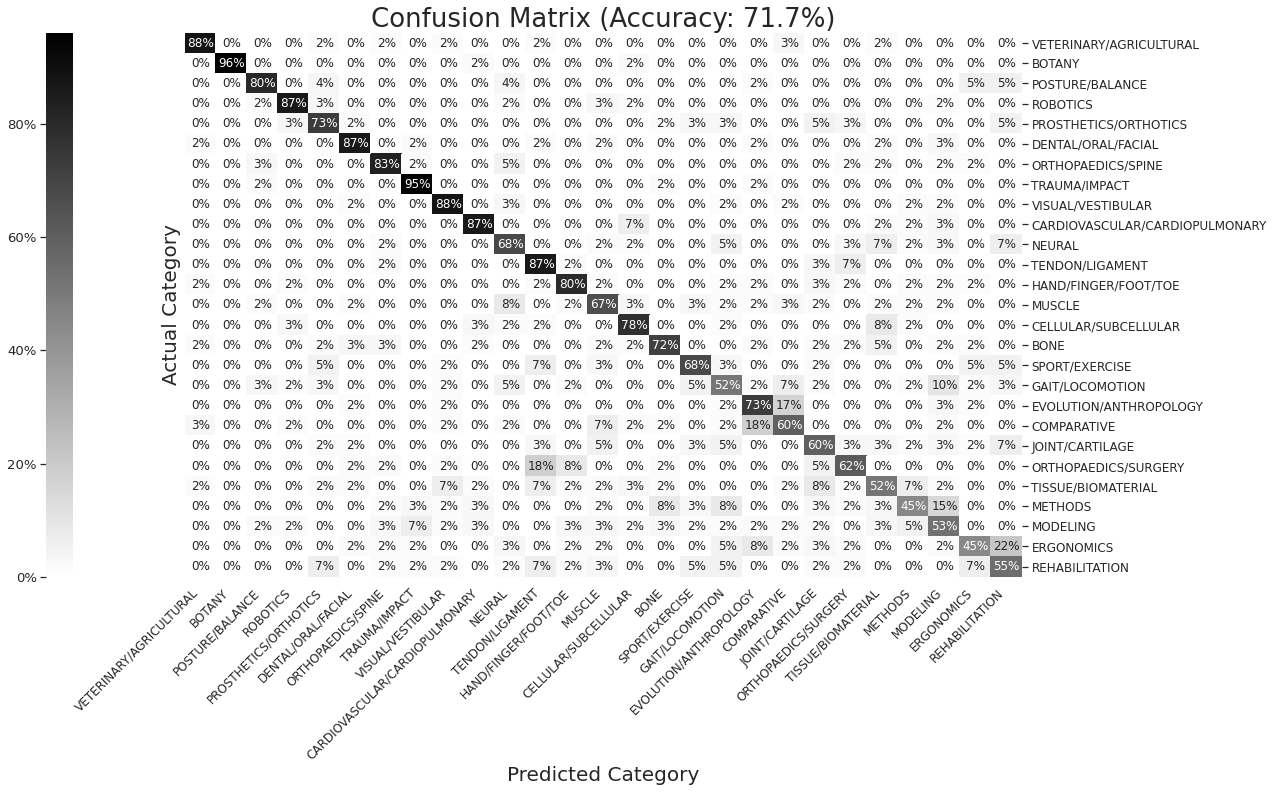BiomchBERT + Biomch-L Literature Updates
Since 1998, volunteers in the Biomechanics community have searched publication databases for relevant articles, categorized them, and shared them via the Biomch-L Literature Update. While parts of the current Literature Update process are automated (e.g. publication search, parsing of publication information), a substantial amount of time is required to go through the papers and categorize them. Neural networks perform well in classification tasks and may be a viable solution to automating the Biomch-L Literature Update process, but large datasets are needed to train neural networks. Thanks to those who have diligently maintained the Literature Updates over the years, there are tens of thousands of categorized publications ready to be used to train a neural network!
Who’s BERT?
BERT is an open-source neural network developed by Google AI and originally trained on all the Wikipedia text to discern the relationship between sentences (semantic similarity) in a given corpus and improve the quality of Google search results. BERT has been used to improve a computer’s ability to accomplish a variety of natural language processing tasks, such as sentiment analysis, question answering, and document classification.
Introducing BiomchBERT
In order to get BERT to classify biomechanics publications, we needed to create a dataset from the previous Biomch-L Literature Updates (16,000 papers). Gary Bruening developed a webscraper that extracted the publication information (title, abstract, authors, journal, etc.) and assigned topic for each Literature Update published from 2010-2018. Then, I fine-tuned a version of BERT trained on text from MEDLINE/PubMed to classify publications into 1 of 27 categories. This fine-tuned BERT network, named BiomchBERT, can now be used to classify new publications based on their title and abstract with 72% accuracy. That level of accuracy may not seem very impressive at first, but consider the overlap between categories like “Comparative” and “Evolution/Anthropology”, or “Joints/Cartilage”, and “Orthopaedics/Surgery”. Many publications can reasonably be categorized into one of several categories.
BiomchBERT has a prediction accuracy of 72% (tested on 1,600 publications):

Moving Forward
Starting January 1st, 2021, BiomchBERT will be used to categorize the publications in the Biomch-L Literature Update. Don’t worry, a human will still be involved in double checking BiomchBERT’s work. Source code for BiomchBERT can be found on the github page. Weekly Literature Updates will be posted on Biomch-L. Read about the early attempt to automate the Biomch-L Literature Update here.
